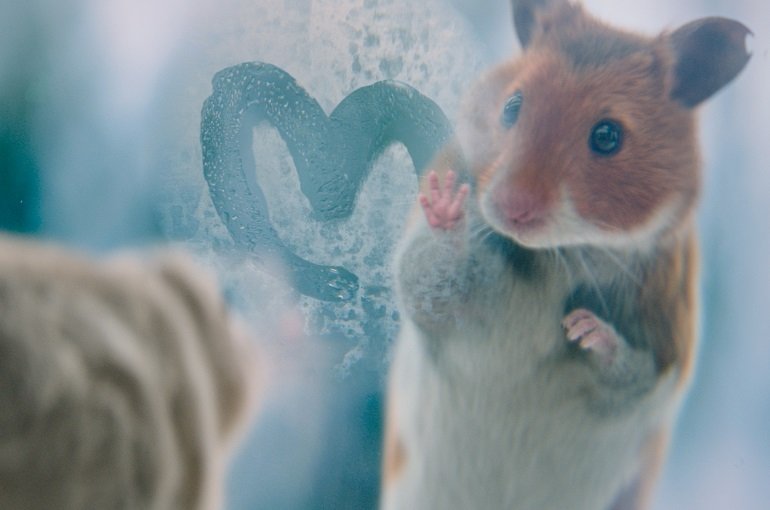Emotional commercials are sometimes more effective than cheerful ones

Commercials that make people feel a lump in their throat or a tear in the corner of their eye are just as effective, and sometimes even more effective, than commercials that make people laugh. This is what communication scientists Prof Hans Hoeken and Dr Hanny den Ouden demonstrate in an article that appears in the Journal of Promotion Management this month. While it has long been known that humour in advertisements helps to sell a product, the effects of emotion had not been thoroughly investigated before.
Social problems may be romanticised, but these emotional commercials do make viewers think.
Lonely hamsters and cheerful granddaughters
You regularly come across them in commercial breaks: commercials that tell a story that tries to move you. And even more so at Christmas time: from lonely hamsters who find true love to a granddaughter who cheers up her elderly grandfather with a present. Researcher Hanny den Ouden: In almost all commercials from this December, you see the themes of 'being together', 'solidarity' and 'doing something for someone else'. Especially the latter, paying attention to issues such as poverty and loneliness, is more prominent this year than in previous years.
Den Ouden welcomes this development: Social problems may be romanticised, but these kinds of commercials do make viewers think.
Her colleague Hans Hoeken places a critical side note to this: Viewers can also be annoyed by this kind of commercial, especially if the story it tells has little to do with the product that is being advertised. You feel manipulated when you are watching a commercial with a tear in the corner of your eye but you don't actually learn anything about the product itself.
Viewers can also be annoyed by emotional commercials, especially if the story they tell has little to do with the product that is being advertised.

Friendship and family ties
Emotional commercials arouse both positive and negative emotions. That is an important difference with humorous adverts, which only evoke positive emotions. Earlier research has already shown that these positive emotions have a positive effect on how viewers value a brand. The Utrecht communication scientists have now investigated for the first time what effect negative emotions have. They focused on themes that are particularly moving, such as friendship, family ties, reconciliation and death.
Beer and ontbijtkoek
For their research, Hoeken and Den Ouden compared how viewers reacted to three types of commercials: a humorous one, an emotional one with a cheerful overtone (in which a character receives support from friends or family in a difficult situation), and an emotional one with a sad overtone (about a situation in which a loved one appears to have died). Subjects were shown advertisements for beer and whiskey brands, a DIY shop, ontbijtkoek (a kind of gingerbread), and funeral insurance. Almost 200 participants filled in a questionnaire that not only focused on what they thought of the commercials, but also on their physical reactions (e.g. laughter, relaxation, goose bumps, lump in the throat). Overall, the touching adverts with a cheerful overtone appeared to be appreciated the most - even more positively than the humorous ones.
With a combination of positive and negative emotions in a commercial, advertisers can distinguish themselves from their competitors.
Positive effects of negative emotions
Hoeken and Den Ouden recommend that advertising producers and advertising researchers should take a closer look at the effects of mixed emotions. Whereas most adverts focus exclusively on positive emotions – often with humour – it is precisely the combination of positive and negative emotions that is highly appreciated by viewers. With such a combination, advertisers can distinguish themselves from their competitors. Den Ouden: In the commercials around the holidays, you see that themes such as loneliness and helping each other are packaged differently each time: with a certain balance between humour and emotion, with animals or people, with the elderly, with children. And yes, it is well known that attitudes towards commercials affect attitudes towards the brand and the product, so they are lucrative too.

